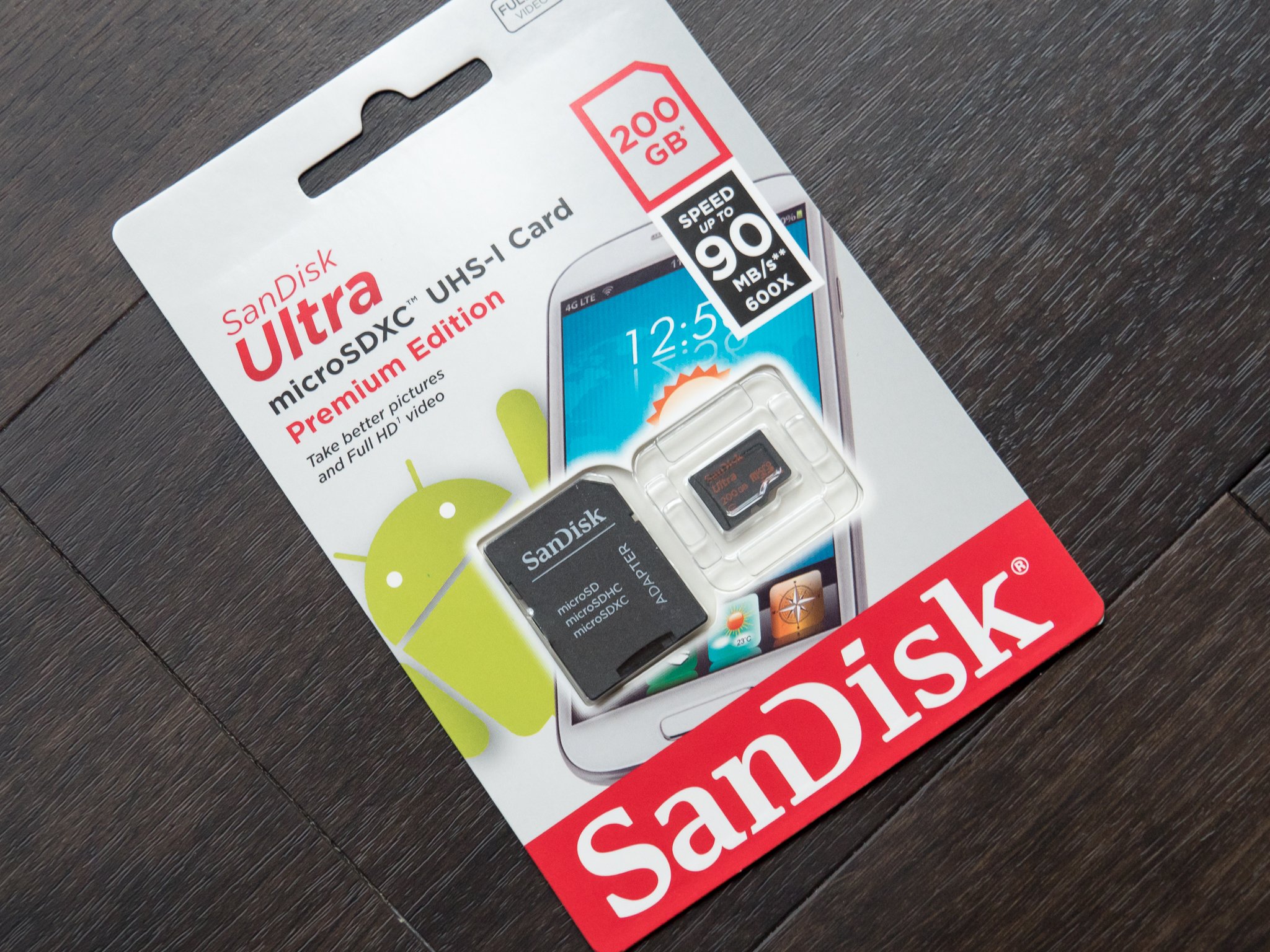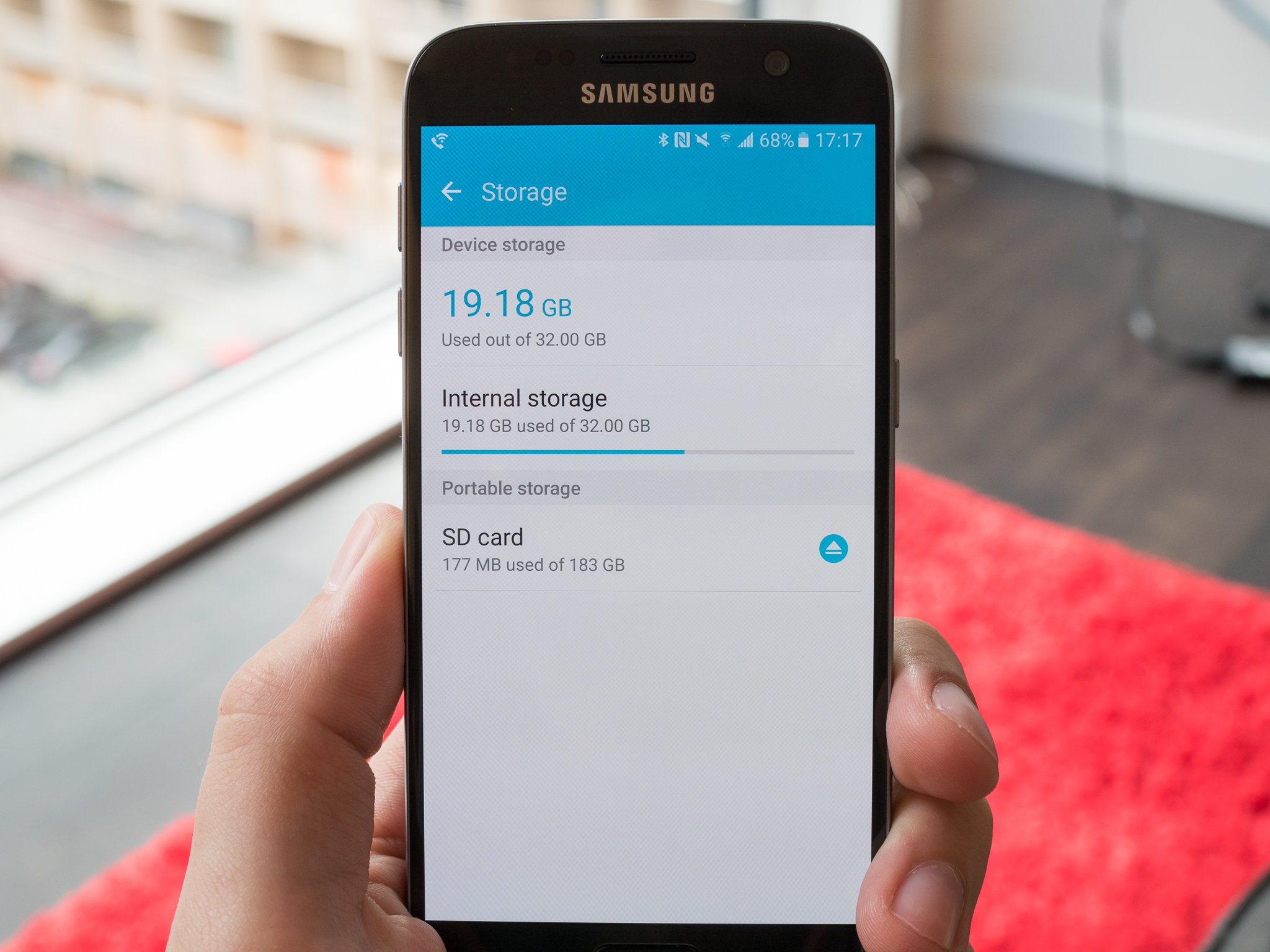Buying an SD card shouldn’t be difficult. Learn what those numbers all mean and how to pick what’s best for you.
SD cards are a cheap way to provide extra storage for just about anything that can create or read a digital file. Most cameras use SD cards, as do audio players and recorders, digital photo frames, many laptops and a lot of phones. While we’re going to focus on the how what and why of using them with an Android phone, the overall ideas are the same and you’ll be just fine using this reference when buying an SD card for anything that can use one.
Buying an SD card can be a little frustrating. You need to find a reputable place to buy them if shopping online, you need to know which type you need and what the class rating means. It’s OK not to know this stuff, and we’re here to help you sort through it.
SD card form factors

Once you’re sure your phone can use an SD card, you need to know just what type of card to buy. SD cards come in different physical sizes, have different read and write speeds and different storage sizes.
Phones use the smallest microSD card form factor.
For your Android phone, you’re looking for the microSD form factor. SD cards come in three different sizes. An SD card is the biggest — a little larger than a postage stamp — and is used for things like stand-alone cameras. The Mini SD form factor is about half the size of a full SD card and they aren’t very popular. Chances are you won’t ever buy anything that needs a Mini SD card. The microSD card is about the size of your fingernail and the one we’re looking for.
When you buy a Mini or microSD card you often get an adapter in the package. The smaller card slides into the adapter so it can fit into something that needs a full-sized card — like your computer — as well as something like your phone that needs a microSD card. This makes it pretty handy when transferring pictures or video from your phone to your computer.
SD card storage versions

There is a method to the madness of all those letters you see.
The next thing you need to know is the storage version. You can buy microSD cards, microSDHC cards, and microSDXC cards. A microSD card was designed to hold up to 2GB of information, though a few 4GB versions are available that work outside of the specifications. microSDHC cards (Secure Digital High Capacity) are designed to hold up to 32GB of data. microSDXC (Secure Digital eXtra Capacity) cards are designed to hold between 32GB and 2TB of data. It’s important to know what version your phone can use. Most all modern phones — Android or otherwise — will be able to use a microSDHC card. Many newer phones are capable of using a microSDXC card.
There is no easy to see difference between a phone that can use a microSDXC card and one that can’t. You’ll need to consult the documentation that came with your phone or hop into the forums and ask other folks who have already found the answer. The versions are backward compatible (a microSDXC card slot can use a microSD or microSDHC card) but there is no forwards compatibility, and if your phone can’t use a microSDXC card it won’t ever work.
SD card speed classes

No card is going to be as fast as the listed maximum.
Finally, you need to understand the speed class ratings. There are currently five different speed classes (listed slowest to fastest) — DS (up to 12.5 MB/s), HS (up to 25 MB/s), UHS-I (up to 104 MB/s), UHS-II (up to 312 MB/s) and UHS-3 (over 312 MB/s). There are also speed “subclasses” and those are listed with a number. You’ll usually see a 2,4 or 6 listed on a DS speed card. HS speed cards will have a 10 listed. UHS cards can also have a U1 to U3 rating.
These numbers are the highest speeds the card is capable of when reading data. No card is going to be as fast as the listed maximum. You’ll often see an actual rated speed listed on the packaging along with the speed class rating.
Deciding what you need

Are you thoroughly confused yet? Don’t be.
- You need to know what size SD card you need. If you’re buying for use in a phone, you need a microSD card.
- You need to know what storage version your phone is compatible with. If in doubt, ask the folks who sold you the phone or others using the same phone in our forums.
- The speed of the card you need depends on what you’re going to do with it.
The first two items on the list above are pretty self-explanatory. The wrong size card isn’t going to fit and anything you attach or insert into a phone needs to be compatible. The speed you’re looking for isn’t too difficult to suss out, either.
- The faster, the better. You’ll never run into a situation where an SD card is too fast. A UHS card isn’t needed to listen to stored music or stream video you have saved, but it won’t hurt anything to use it. Faster SD cards will more future-proof if you decide to shoot a lot of videos, especially in 4K.
- Never buy a card slower than Class 10. Class 10 cards are a great compromise between price and performance. They are plenty fast enough to transfer music or pictures to a computer (or the other direction), are fast enough if your phone camera has a burst mode, and are even fast enough to store Android application data. Your phone is probably capable of copying bits and bytes faster than the 25 MB/s when doing these things, but it’s not going to be able to process that data fast enough to see a noticeable difference.
- If you shoot 4K videos, the card is never fast enough. See item one in this list.
4K video has a need for speed.
Your phone needs to be able to copy video data to the storage as fast as it can. It copies this information from the camera a lot faster than it would if it were a regular data file. There is a noticeable difference between a few minutes of 4K video shot using a Class 10 card and the same video shot when using a UHS speed class card. Video can look blurry or fuzzy, audio can be out of sync or you can even see some skipped frames. Once you see it side by side you can’t unsee it, and I’ll save you the trouble and tell you up front that to shoot any HD video you need a UHS speed class card. Of course, shooting video directly to the phone’s internal storage is always better than straight to an SD card.

The Samsung Galaxy S7 makes for a great example here, so we’re going to use it. Remember, your phone may support different speed classes.
The Galaxy S7 supports microSDXC cards using the UHS-I speed bus. UHS-II cards will work in the Galaxy S7, but the extra speed is not supported — there are two extra points of contact that are not present on the S7’s card reader. To take pictures, store music or video on the card or to add some application data, any UHS-I card would work and may even be overkill. The thing to consider with the Galaxy S7 is that it has a really good camera that can take 4K videos. If you’re going to shoot 4K videos, you need a UHS-I class U1 card or better. If you use anything slower, you’ll see a difference in quality.
The bottom line: A faster SD card is always better
This is especially important if you’re going to be shooting HD or UHD video because you need to be able to write the raw data stream to the storage as fast as you can.
Using a fast card to do “normal” things like store files or copy pictures to a computer doesn’t hurt anything. It makes no sense to ever buy anything slower than an HS speed Class 10 card.
If you’d rather not know all this industry talk and just want to buy an SD card and move on, here’s the skinny. Find out what version microSD card your phone supports, and buy a good brand name card from someone you can trust (there are a lot of slow cards with the wrong label being sold at places like eBay) that’s as fast as you can find and you’ll be fine.
More: The best microSD cards for Android